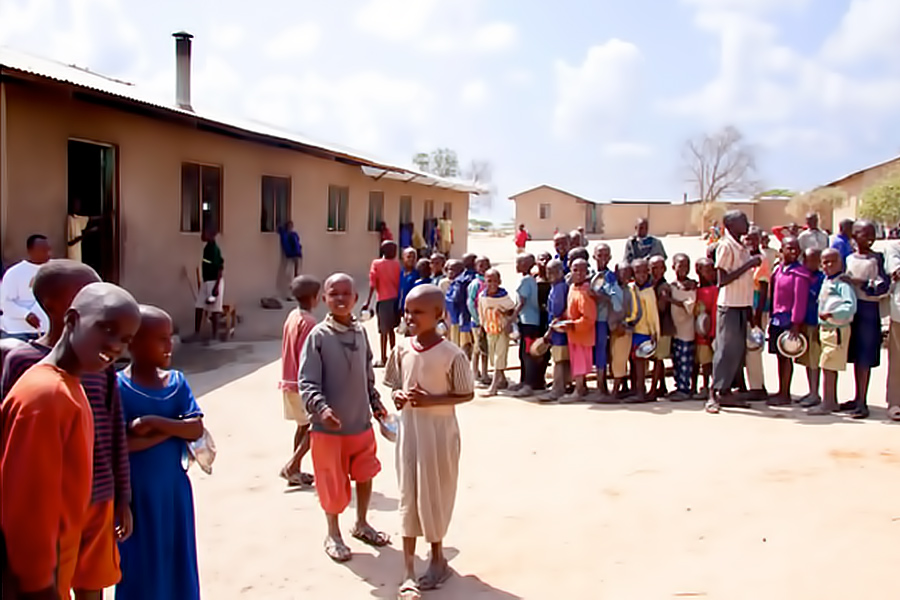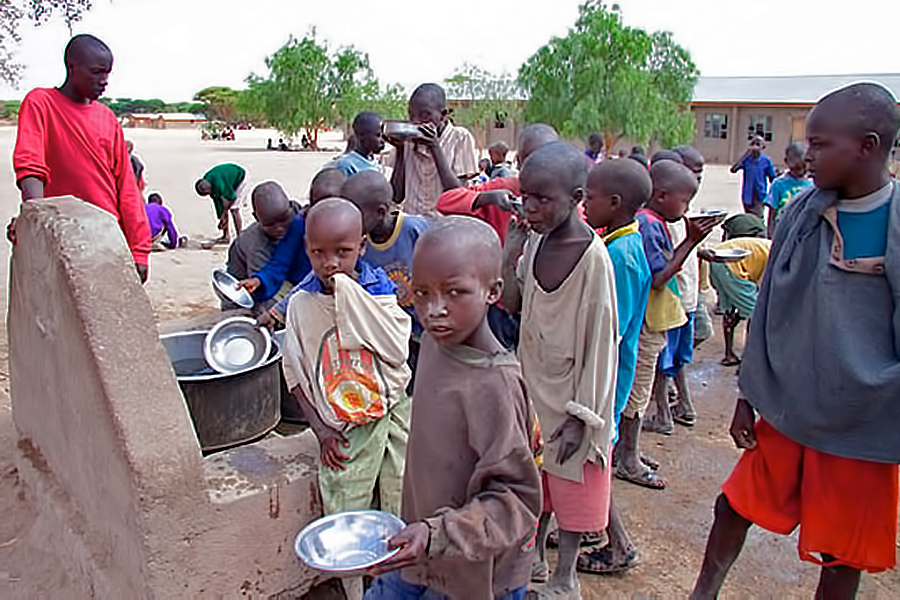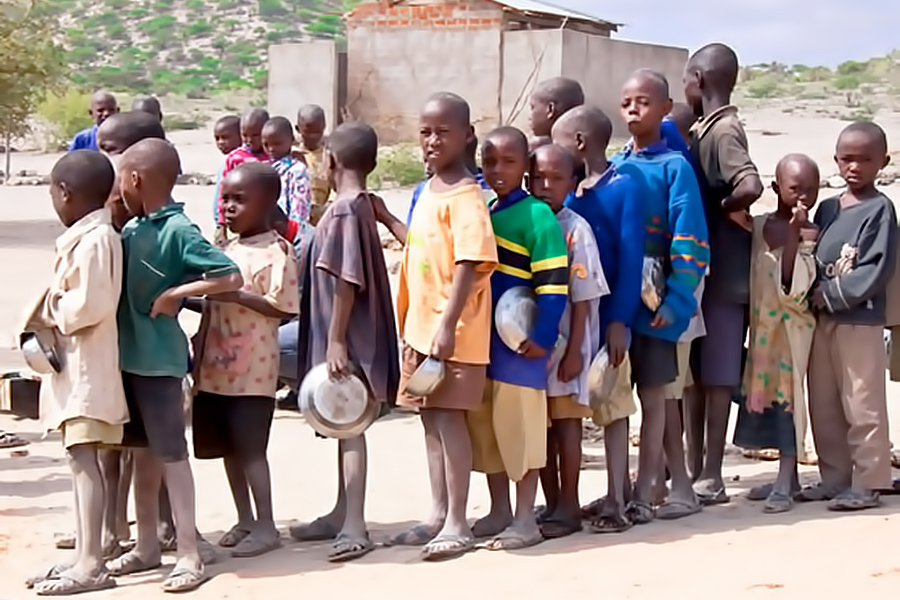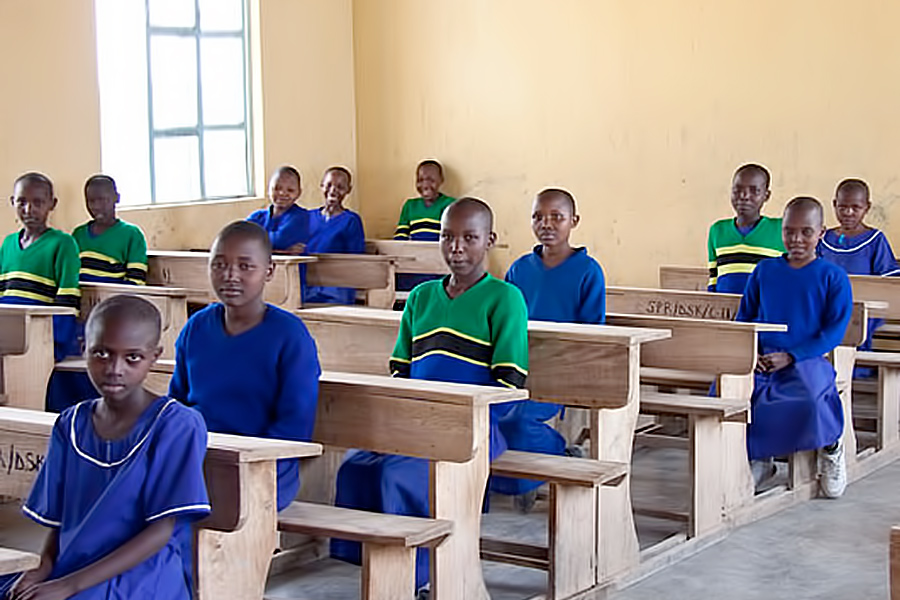


MAASAI SCHOOL IN TANZANIA
The Tanzania school system is based on the British system - elementary school, secondary school and college/university/trade school. Entry to secondary school is via national exam. If a student fails the exam, they cannot advance to secondary or trade school. Schools are few and widely scattered, forcing children who do attend school to often walk long distances. As a result many schools are boarding schools and the dormitories house students from the surrounding areas. There are usually no school fees so that parents are encouraged to send children to school. Because the Maasai depend on their children to tend their herds of cattle, sheep and goats, many parents don't send the children to school in the belief that a formal education is not needed to tend their animals. And once a child has attended school and progresses through the educational system they seldom return to the family kraal. Most Maasai children never attend school. However the number of students attending is gradually increasing.
Students dress in a school uniform and although primarily Maa speakers (the indigenous Maasai language), elementary school is conducted in Kiswahili, the national language. In addition to the usual full range of subjects, English is taught as a subject. However, secondary schools classes are taught in English. Most educated Maasai are tri-lingual: Kiswahili, English and their tribal language. They use their tribal language within their home and Kiswahili and their tribal language "on the street". However, almost all are at least somewhat conversant in English. The School Year Students attend school year-round, with breaks from June 1 through July 15, September 15 through September 30, and December 1 through December 30.

A typical day in the life of a Maasai Student
Daylight: girls help fetch water from the nearby stream or pond then start a fire to heat water before helping their mother cook breakfast which often consists of milk, beans and rice. After breakfast the boys help the men drive animals out of the kraal to pasture. At 8:00 am boys and girls walk 45 minutes to one hour to their school. They carry their day's water with them. The school often has no faucet or electricity. School starts at 8:45 am with students gathering in the school grounds to sing the Tanzanian national anthem. From 9:00 am to 12:00 noon there are classes of 45 minutes followed by a study period of 45 minutes. This pattern continues until noon. Noon to 1:00 pm is lunch period. Schools provide a lunch usually consisting of a nutritious soup with bread. From 1:00 pm to 2:00 pm the last class period finishes each day of school. Most of the schoolwork is written on the chalkboard; students spend a lot of time copying. Textbooks are seldom available.

After the last class, students put wooden desks and chairs in place to leave the room ready for the next day's class. This ends the school day. The students then are free to go home, usually at least an hours walk. Once they are home, the boys return the family's animals back to the kraal while the girls help carry water and firewood to the kraal, then help cook dinner and do household chores. Late afternoon, the family eats dinner, mostly beans, rice, milk and very often meat, usually beef. Students often attend centralized boarding schools to avoid traveling long distances to school. Boarding school students rise around 6:00 am, make their beds, clean the dormitory, dress and prepare for breakfast which is served in a dinning room that often doubles as a classroom. After breakfast the school routine is much the same for boarding schools as for day schools. After the day's lesson periods are finished the students attend to various chores that are allocated to them on a rotational basis. Boarding schools and day schools often require uniforms for at least the older students and discipline for all students is strict with emphasis placed on obedience, good manners and good study habits. We took the photos on this page at a school located in northeast Tanzania in a wilderness area inhabited by elephants, lions, hyenas and other predators. Children walking back and forth from school are sometimes threatened, injured or killed by wild animals. At this school, 75 percent of the children attend as boarding schools students.

Back to [Kid2Kid Index]
